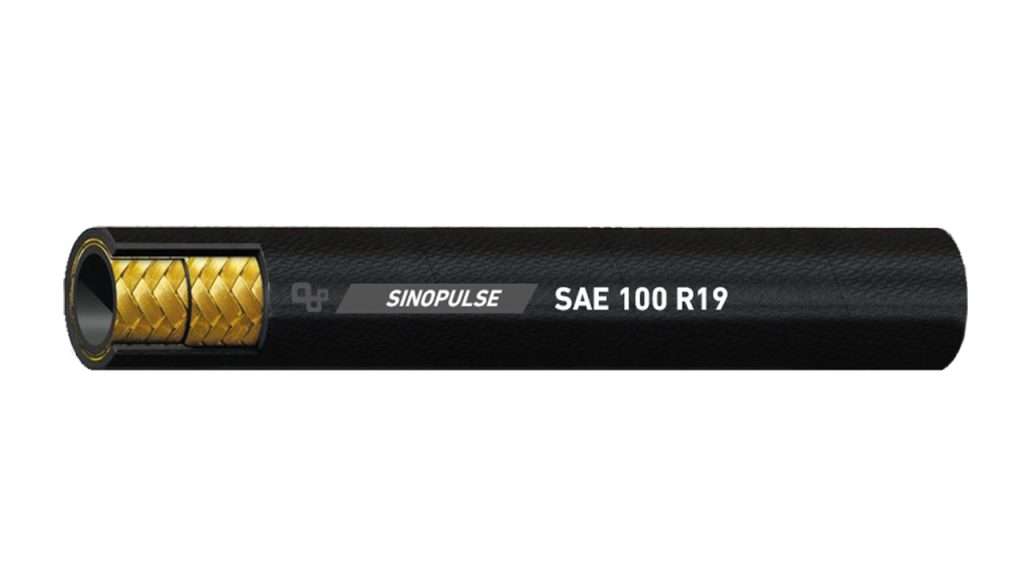High Temperature Hoses
High Temperature & High Pressure Hose
Sinopulse offers China quality high temperature hydraulic hoses suitable for use with petroleum based hydraulic fluids and lubricants. We help you maintain your profits with competitive factory prices
For these high temperature hoses, we offer custom length options to meet your specific application requirements.
What is a high temperature hose?
High temperature hoses are made to withstand a wide range of temperatures to suit specific applications. The materials used to make these hoses are typically very durable and have excellent thermal stability to withstand the high temperatures in the environments in which they will be used. Determining the maximum temperature that the hose will be subjected to is important to ensure that it is suitable for your application.
Where are high temperature hoses used?
High temperature hoses are ideal for applications such as bus station maintenance facilities, public transportation authorities, military vehicle maintenance facilities, OEM vehicle exhaust, heavy equipment maintenance, engine test bench applications, portable heaters, high-end HVAC applications, and even pavement drying. High temperature hoses are also needed in facilities such as foundries and in applications such as drying systems and furnaces. These areas require durable hoses that can handle high temperature requirements. Selecting a hose that does not meet high temperature specifications can result in hose failure, which can lead to injuries and other serious hazards.
How Different Materials Affect High Temperature Resistance
Rubber:
Rubber hoses are one of the most commonly used hoses because they are flexible and can withstand a wide range of liquids. However, rubber generally has limited resistance to high temperatures. It performs well in moderate temperature ranges, but can deteriorate with prolonged exposure to extreme heat or cold.
Thermoplastics:
Thermoplastic hoses are often used in applications that require greater chemical resistance and resistance to extreme temperatures. These hoses can withstand a wider range of temperatures than rubber hoses, allowing for greater versatility in environments with fluctuating temperatures. However, thermoplastics can become brittle at very low temperatures.
Metal (such as stainless steel or PTFE):
PTFE (polytetrafluoroethylene) hoses are known for their resistance to high temperatures and are often used in applications that require operation in extremely hot environments. Metal hoses are often made of stainless steel and are also very durable in extremely hot and cold environments. However, they lack the flexibility of rubber or thermoplastic hoses, limiting their use in certain dynamic applications.
Types of Hydraulic Hose by Material
Rubber Hydraulic Hose:
Advantages: Rubber hoses are flexible, durable, and can handle a wide range of hydraulic fluids. Rubber hoses are widely used and are generally cost-effective for most applications.
Disadvantages: Rubber tends to degrade in extreme heat or cold, making it less suitable for temperature-sensitive applications. Prolonged exposure to high temperatures can cause rubber to crack or blister, while low temperatures can cause rubber to become hard and brittle.
Thermoplastic Hydraulic Hose:
Advantages: Thermoplastic hoses are more resistant to chemicals and extreme temperatures than rubber hoses. They are more durable in harsh conditions, including environments with varying temperature ranges.
Limitations: Thermoplastic hoses are more expensive and less flexible than rubber hoses. At very low temperatures, they can become stiff and brittle, leading to cracking or failure.
PTFE Hydraulic Hose:
Unique Benefits: PTFE hoses have extremely high heat resistance, making them ideal for high-temperature applications such as aerospace, chemical processing, and the automotive industry. They have excellent chemical resistance and do not degrade in extreme temperatures. PTFE hose maintains its strength and flexibility even in environments exceeding 400°F (204°C).
Temperature Rating Explanation
Defining Temperature Limits:
Temperature limits are the minimum and maximum temperatures at which a hydraulic hose can safely operate. These limits are specified by the hose manufacturer and vary based on the hose material, construction, and intended use. For example, a rubber hose may have a temperature range of -40°F to 212°F (-40°C to 100°C), while a PTFE hose may have a temperature range of -65°F to 450°F (-54°C to 232°C).
How Temperature Ratings Are Determined:
Manufacturers determine the temperature rating of hydraulic hoses based on rigorous testing. Hoses are subjected to environmental simulations to evaluate their performance under varying temperature conditions. These tests evaluate how temperature affects the hose's material integrity, flexibility, pressure handling, and fluid compatibility. Manufacturers also consider how changes in temperature affect the hose's resistance to wear and abrasion.
Temperature ratings are generally divided into two categories:
Continuous Operation: The temperature range in which a hose can safely operate over an extended period of time without damage.
Intermittent Operation: Hoses can withstand higher or lower temperatures for short periods of time without failure, but continuous use is not recommended.
What is the highest temperature a hydraulic hose can withstand?
The highest temperature a hydraulic hose can withstand depends on the hose material. For example, rubber hoses can typically withstand temperatures up to 212°F (100°C), while PTFE hoses can withstand temperatures up to 450°F (232°C).
How do I know if my hydraulic hose is overheating?
Signs of overheating include bubbling, discoloration, or cracking of the hose cover. Regular inspections can help catch these signs early.
What materials are best for high-temperature hydraulic hoses?
PTFE and stainless steel braided hoses are excellent choices for high-temperature applications because they can withstand extreme heat without degrading.















